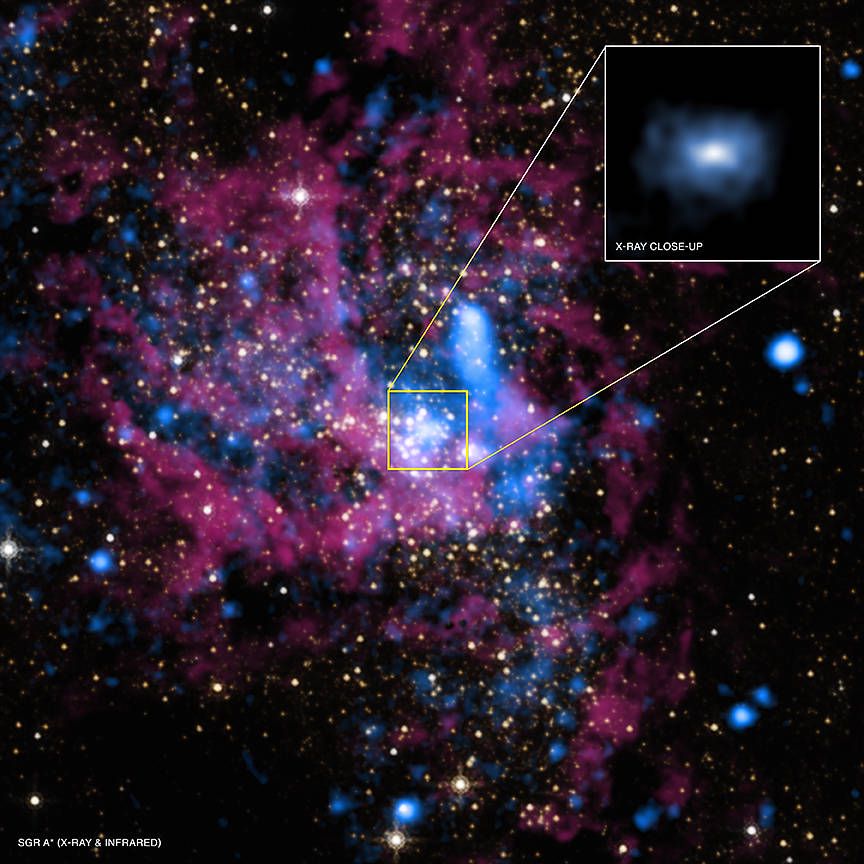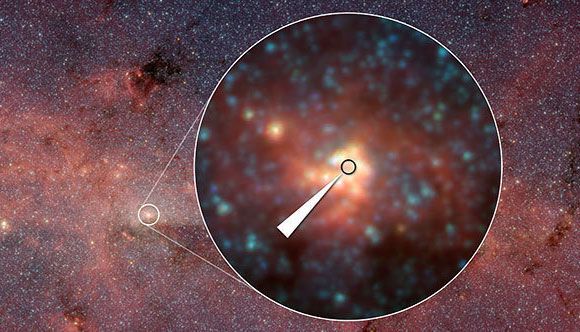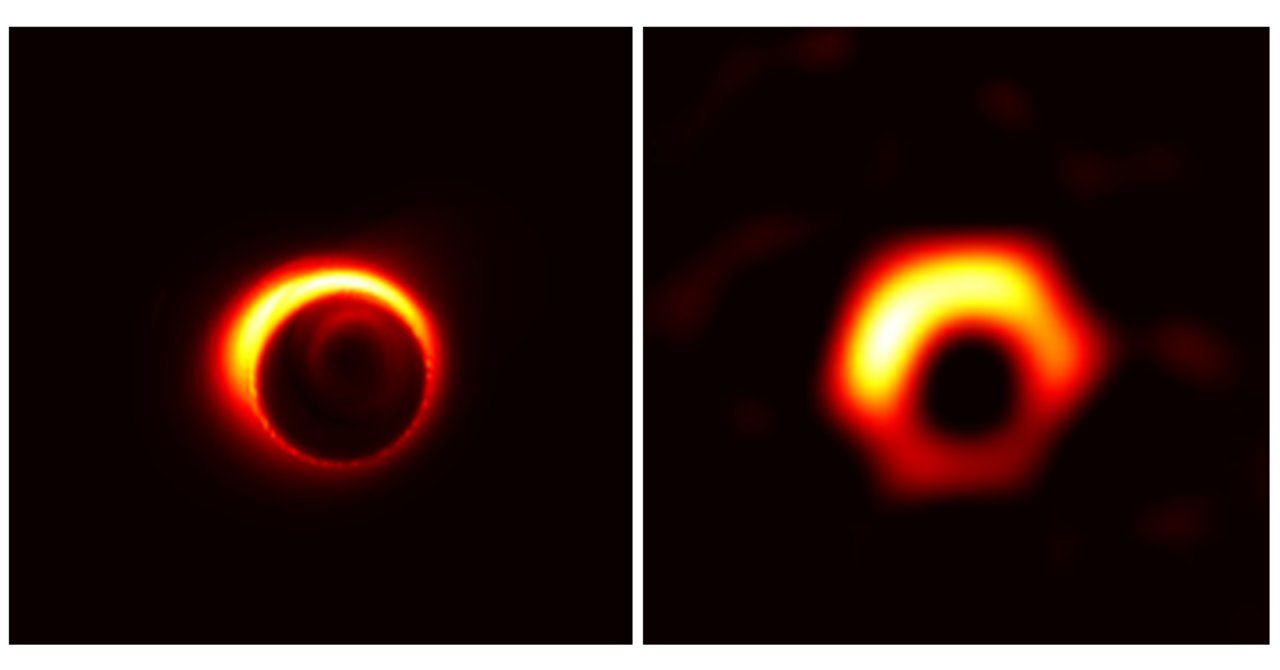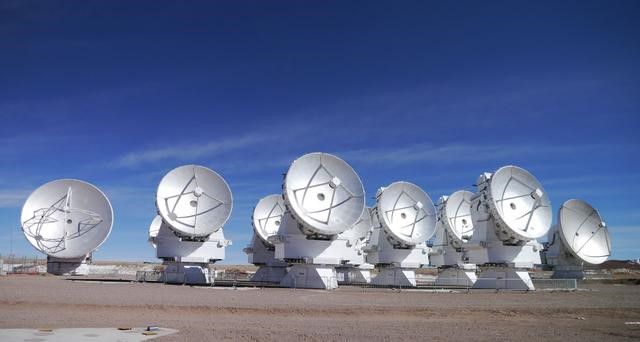Sagittarius A
Sagittarius A
Everyone should remember that this is the name of the supermassive black hole in the center of the Milky Way galaxy. Well, it turns out that astronomers have made much more detailed observations of this huge black hole. In fact, they have examined this region with a 36-million-kilometer radius, which is three times the radius of the supermassive black hole itself.
Why are they doing this?
The reason is simple. They're trying to understand how the matter orbiting around the supermassive black hole's event horizon is situated. This is important to understanding whether our central black hole is going to evolve into a quasar, an action that could spell doom to life in our galaxy.

There are two models of what the matter around the supermassive black hole looks like. One theory is that it has a hot spot to one side. The theory that fits the latest data suggests that it's in the form of a ring.

The method used to determine this matter configuration involves using radio telescopes at four different sites and combing them into a interferometer arrangement. This idea improves the resolution of the observations by orders of magnitude, which allows a much more detailed image. This was done in 2013.

The latest data was improved by using the Event Horizon telescope (ETH). This observation was done in 2017 and they're still analyzing the data.

Current data has allowed a much better image of the event horizon of Sagittarius A. This was done using the ALMA, the Atacama Large Millimeter/submillimeter Array, a group of 66 radio dishes in Chile. By linking ALMA, with IRAM in Spain, Arizona Radio Observatory Submillimter Telescope in Arizona, James Clark Maxwell Telescope Submillimter Array in Hawaii, and the South Polar Telescope in Antarctica, the resolution of the images has been greatly improved.
Keep in mind that that Sagittarius A is 26,000 light years from Earth, and although it's eight million miles in diameter, it's still very small to any telescope array. Basically, the only way to observe a black hole is to see its accretion disc, the superheated gas and dust spinning around the black hole at near the speed of light. This spinning action causes friction that heats the gas and dust to millions of degrees, causing it to emit radiation in the form of infrared and radio signals. The problem is that the radio signals are in the submillimeter range, which can be blocked by clouds and rain in the atmosphere. That's why most of these radio telescopes are located high up on mountains in very dry locations.
I'm sure that much better data will lead to an actual image of this beast in the bowels of our galaxy
Thanks for reading.
Bạn đang đọc truyện trên: Truyen247.Pro